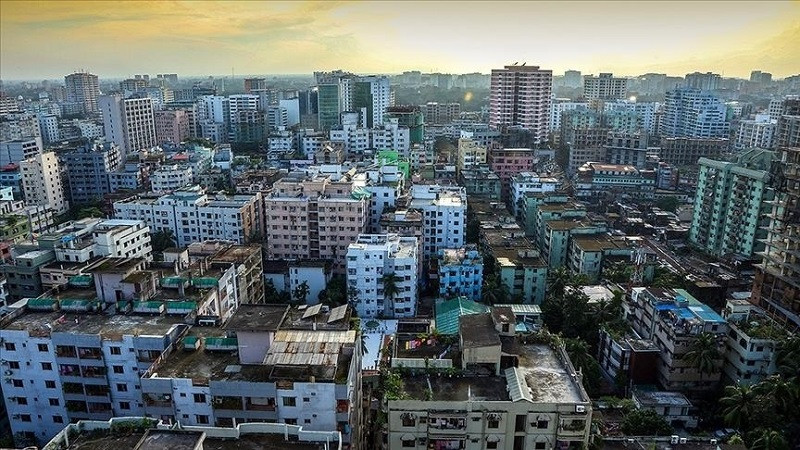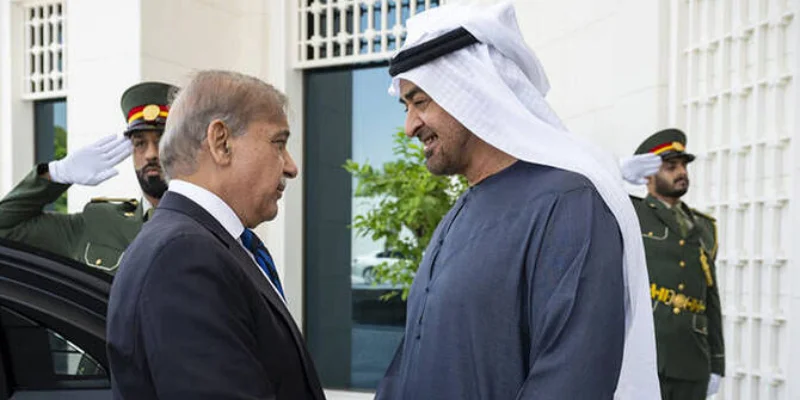DHAKA:
Rush hour in Bangladesh’s capital Dhaka is a cacophony of honking horns and idling engines. Auto-rickshaw driver Ripon, like countless others, weaves through the dense traffic with a practiced ease. But ask him about the city’s traffic lights, and a hint of exasperation creeps into his voice.
“Those things are useless!” he laments. “I can’t remember the last time one actually worked.”
Ripon’s experience reflects a city-wide struggle. Dhaka’s history with traffic signal automation is checkered with failed projects. One initiative aimed to automate 110 intersections across the city. But today, only a solitary signal at the upscale Gulshan-2 remains operational.
This is where this city of 20 million is taking a bold step into the future, turning to artificial intelligence (AI) in a bid to revolutionise traffic management. An initial pilot project at Gulshan-2 intersection, despite some malfunctions at first with the timers, has instilled some optimism among the Dhaka residents.
“It seems like they are actually working,” Omar Ibne Azam, a businessman and a resident of Gulshan told Anadolu, “I found out that based on traffic loads, these AI signals are allocating time automatically. That’s smart.”
Read also: China opens 1st AI hospital town to treat patients in virtual world
Suchitra Kumar, a traffic police officer at Gulshan, also praised the AI-based signals, which he said have made his job easier. “Now I don’t need to constantly move under the scorching heat of the sun to control the traffic,” he told Anadolu.
The technology uses real-time data from cameras and sensors to analyse the flow of traffic and adjust signal durations accordingly. “By adapting to the actual conditions on the ground, AI traffic signals optimise traffic flow, reduce congestion, and minimise wait times,” Adnan Rashid, an engineer involved with the project, told Anadolu.
They can prioritise emergency vehicles, detect pedestrians and cyclists, and even coordinate with neighbouring intersections for smoother traffic management, Rashid added.
Layers of complexity
But under the surface hides a series of complex systems. While the signals function based on real-time data which their system cross-match against a historical data set, there is a missing link: The footage and data these signals capture are not readily available to all agencies involved in traffic management.
For example, the traffic division of the Dhaka Metropolitan Police does not have easy access to the AI camera footage due to bureaucratic red tape and arduous coordination with municipalities, known locally as city corporations.
In most cases, traffic violations are still filed manually, creating additional logistic and bureaucratic hurdles in the way of full automation. There is also always the problem of pedestrians rushing into motor traffic to cross the street. Sometimes, traffic police have to block roads temporarily to make way for senior officials and others, with nothing but their whistle and hand gestures.
Dhaka North City Corporation (DNCC) CEO Mir Khairul Alam, however, is not deterred by all these initial hiccups. With a resolute nod, he told Anadolu that AI-powered traffic lights would help alleviate traffic. “The user interface is currently under review,” Alam explains, hinting at continued improvement. “Our vision is a phased rollout across the entire city.”
Alam also noted that the aim was to replicate the “success of the Gulshan-2 pilot” at six more intersections across the city.
Where lies the challenge?
At the heart of the AI-based traffic monitoring system lies a real-time control room. Here, city corporation executives, traffic officials, and technical teams monitor the traffic flow using data from the AI system. When a violation occurs, the registered owner of the offending vehicle receives a warning via automated text message, along with video evidence.
However, two key challenges are hindering what could be optimal results. The first is a lack of coordination between authorities. As mentioned above, traffic police, responsible for enforcement, have no access to the AI camera footage. While DNCC officials can monitor the feed and control the signals, they lack the power to enforce traffic laws.
This disconnect is evident in the words of the deputy police commissioner of the Gulshan Traffic Division, Abdul Momen. He claims to have learned about the AI system through media reports, highlighting the lack of communication between entities.
DNCC CEO Alam also acknowledged the need for policy changes. “Granting police access to the system requires decisions from the Home Ministry,” he conceded.
Meanwhile, down the street at the Dhaka South City Corporation (DSCC), the enthusiasm seems at odds with the slow pace of progress. Despite a lack of coordination with other agencies and delays in appointing a consultant for a feasibility study, the DSCC is forging ahead with plans for new AI traffic signals at over 100 intersections.
Rajib Khadem, the DSCC’s superintending engineer for traffic engineering, told Anadolu that the AI signals are a new thing for them. “All new things need some time for adaptation and proper functioning. We will overcome these challenges,” he said.
He also noted that the southern city corporation is working closely with their counterparts in the DNCC and local administration under the Prime Minister’s Office to ensure city-wide implementation.
Learning from past mistakes
Experts are still sceptical as previous projects for smart traffic signals have failed miserably.
In the early 2000s, a World Bank-funded project saw automatic traffic signals installed at 70 intersections, an initiative that did not even last a year. Fast forward to 2010, and another World Bank project, called “Clean Air and Sustainable Environment,” attempted to install an automatic system with solar panels and timers at 92 intersections. That too, is now defunct.
The most recent failure came in 2016, with an experiment in AI traffic management that cost 520 million Bangladeshi taka ($5 million). These repeated setbacks raise a crucial question: Can this AI initiative succeed where others have failed?
Md. Shamsul Hoque, a road communication expert at the Bangladesh University of Engineering and Technology (BUET), throws cold water on the idea. He argues that AI will not be effective in Dhaka’s chaotic traffic environment, where a lack of lane discipline and the presence of non-motorised vehicles create a situation where “no science will work.”
Read: Dependence on foreign AI
The data seems to back up his claim. A joint report by BUET and the World Bank shows a drastic drop in average vehicle speed in Dhaka, from 21 kph (about 13 mph) in 2007 to a mere 4.8 kph in 2022. A recent US National Bureau of Economic Research report even crowned Dhaka the slowest city out of 1,200 in the study.
Md. Hadiuzzaman, a civil engineering professor at BUET, pointed out another important feature of AI-based traffic monitoring systems. “Separating slow and fast traffic lanes is crucial before any large-scale AI implementation,” he emphasises. “Without this, success is unlikely.”
He highlighted the current situation, in which slow-moving vehicles like rickshaws impede faster traffic and prevent speeds exceeding 15-20 kph.
Md. Musleh Uddin Hasan, another professor, transportation policy and planning expert at BUET, shares similar concerns. “Technology like AI might offer temporary relief at specific intersections,” he concedes, “but it’s highly unlikely to solve Dhaka’s peak hour congestion.”
Bolstering his point, a study has recently revealed that most commuters travel during morning and evening rush hours, precisely when an estimated 60% of the city’s vehicles flood the streets, leading to average travel times of two-and-a-half to three hours, according to Dhaka Metropolitan Police reports.
The problem is further compounded by Dhaka’s ever-growing population. The Bangladesh Bureau of Statistics estimates an influx of 500,000 to 600,000 new residents annually, translating to about 2,000 additional people per day. The booming population puts immense strain on the city’s already inadequate road infrastructure.
“Implementation of these AI-based signals somehow feels like the authorities are putting the cart before the horse,” said civil engineering professor Hadiuzzaman, “Dhaka’s roads are not ready for these now.”







